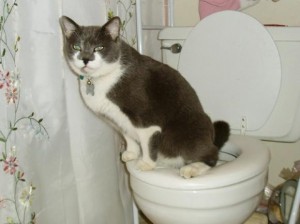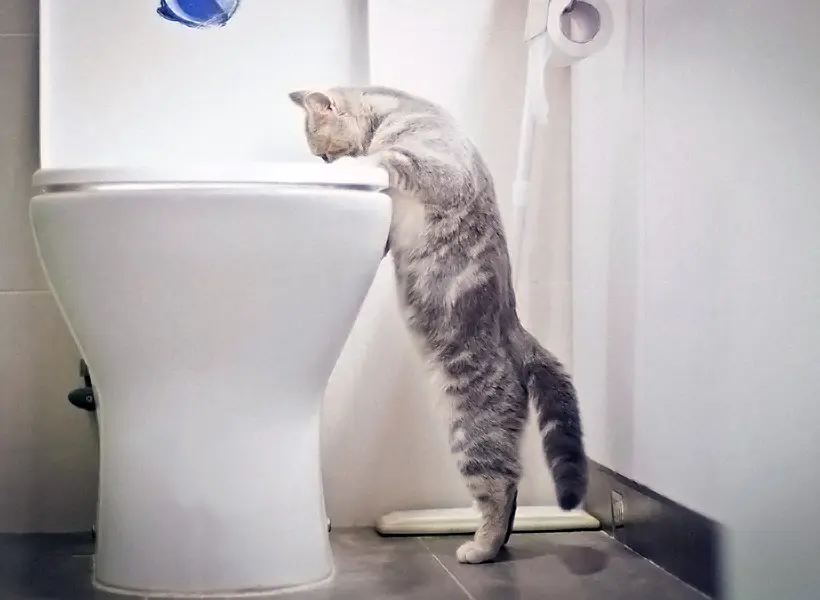Why Flushing Cat Poop Down Your Toilet Isn't a Good Idea - Tips for Safer Disposal
Why Flushing Cat Poop Down Your Toilet Isn't a Good Idea - Tips for Safer Disposal
Blog Article
What are your thoughts concerning Can You Flush Cat Poo or Litter Down the Toilet??

Intro
As cat proprietors, it's essential to be mindful of just how we get rid of our feline close friends' waste. While it might seem hassle-free to flush pet cat poop down the bathroom, this technique can have detrimental effects for both the setting and human wellness.
Ecological Impact
Purging feline poop presents harmful pathogens and bloodsuckers into the supply of water, posturing a substantial risk to water ecosystems. These impurities can adversely impact marine life and concession water top quality.
Health and wellness Risks
Along with environmental worries, purging pet cat waste can also pose health threats to human beings. Cat feces may have Toxoplasma gondii, a bloodsucker that can cause toxoplasmosis-- a possibly serious health problem, especially for expectant ladies and people with weakened body immune systems.
Alternatives to Flushing
The good news is, there are more secure and extra liable methods to take care of feline poop. Consider the adhering to alternatives:
1. Scoop and Dispose in Trash
One of the most common technique of disposing of cat poop is to scoop it right into a naturally degradable bag and throw it in the trash. Make certain to utilize a committed litter inside story and deal with the waste promptly.
2. Use Biodegradable Litter
Go with naturally degradable cat clutter made from materials such as corn or wheat. These litters are eco-friendly and can be securely disposed of in the garbage.
3. Hide in the Yard
If you have a yard, think about hiding pet cat waste in a designated area away from veggie yards and water sources. Make sure to dig deep sufficient to avoid contamination of groundwater.
4. Install a Pet Waste Disposal System
Invest in a pet dog garbage disposal system particularly designed for feline waste. These systems use enzymes to break down the waste, reducing smell and environmental effect.
Conclusion
Accountable pet possession extends beyond giving food and shelter-- it additionally involves appropriate waste monitoring. By refraining from flushing pet cat poop down the toilet and choosing different disposal approaches, we can reduce our environmental impact and shield human health.
Why Can’t I Flush Cat Poop?
It Spreads a Parasite
Cats are frequently infected with a parasite called toxoplasma gondii. The parasite causes an infection called toxoplasmosis. It is usually harmless to cats. The parasite only uses cat poop as a host for its eggs. Otherwise, the cat’s immune system usually keeps the infection at low enough levels to maintain its own health. But it does not stop the develop of eggs. These eggs are tiny and surprisingly tough. They may survive for a year before they begin to grow. But that’s the problem.
Our wastewater system is not designed to deal with toxoplasmosis eggs. Instead, most eggs will flush from your toilet into sewers and wastewater management plants. After the sewage is treated for many other harmful things in it, it is typically released into local rivers, lakes, or oceans. Here, the toxoplasmosis eggs can find new hosts, including starfish, crabs, otters, and many other wildlife. For many, this is a significant risk to their health. Toxoplasmosis can also end up infecting water sources that are important for agriculture, which means our deer, pigs, and sheep can get infected too.
Is There Risk to Humans?
There can be a risk to human life from flushing cat poop down the toilet. If you do so, the parasites from your cat’s poop can end up in shellfish, game animals, or livestock. If this meat is then served raw or undercooked, the people who eat it can get sick.
In fact, according to the CDC, 40 million people in the United States are infected with toxoplasma gondii. They get it from exposure to infected seafood, or from some kind of cat poop contamination, like drinking from a stream that is contaminated or touching anything that has come into contact with cat poop. That includes just cleaning a cat litter box.
Most people who get infected with these parasites will not develop any symptoms. However, for pregnant women or for those with compromised immune systems, the parasite can cause severe health problems.
How to Handle Cat Poop
The best way to handle cat poop is actually to clean the box more often. The eggs that the parasite sheds will not become active until one to five days after the cat poops. That means that if you clean daily, you’re much less likely to come into direct contact with infectious eggs.
That said, always dispose of cat poop in the garbage and not down the toilet. Wash your hands before and after you clean the litter box, and bring the bag of poop right outside to your garbage bins.
https://trenchlesssolutionsusa.com/why-cant-i-flush-cat-poop/

We are very occupied with How to Dispose of Cat Poop and Litter Without Plastic Bags and I am hoping you appreciated the new page. So long as you liked our blog entry please remember to pass it around. Thank you so much for going through it.
Book An Estimate Now Report this page